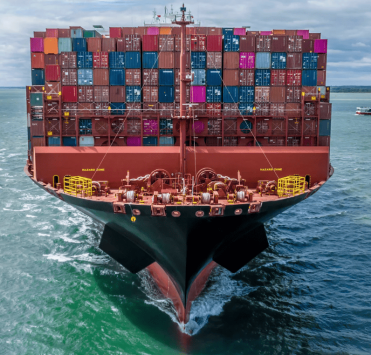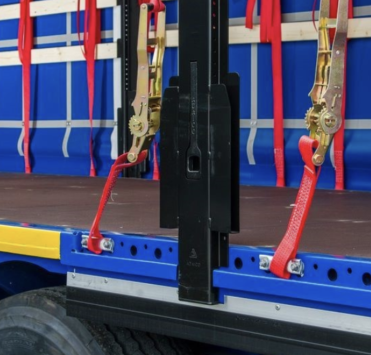Customs code: What it means for exporters and importers

In international trade, the customs code plays a critical role as it determines the classification of goods as they cross the border. It is a special numerical identifier that helps to properly formalize cargo, calculate customs duties and taxes and avoid problems with legislation. For companies involved in international logistics and foreign economic activity, the accurate determination of the customs code is a guarantee of fast customs procedures and absence of delays. Let's find out how the system of customs codes works, how to choose them correctly and what peculiarities exist in different countries.
Why is the customs code so important?
A customs code is a key element in international trade that has several important functions:
- Calculating customs duties and taxes. Using the correct code ensures accurate calculation of tax liabilities and avoidance of additional charges.
- Import and export control. Government agencies use customs codes to regulate the import and export of goods in accordance with applicable laws.
- Foreign trade statistics. Tracking the flow of goods allows governments to analyze economic activity and make informed decisions on customs policy.
- Protecting the market from smuggling. By accurately classifying goods, customs abuse can be prevented.
- Speeding up the customs clearance process. A correctly defined code avoids unnecessary inspections and delays at customs.
How to correctly determine the customs code for goods?
To avoid errors in classification, it is necessary to adhere to a certain sequence of actions:
- Analyzing the characteristics of the goods. It is important to take into account its composition, purpose, method of production and other parameters.
- Using the Harmonized System (HS). Most countries work according to the generally accepted international classification of goods.
- Consultation with a customs broker. Specialists will help to correctly identify the code and prevent possible errors.
- Checking official online databases. Many countries provide special services to find the customs code.
- Analyzing customs declarations of previous shipments. If the company has previously imported or exported similar goods, it is worth using already verified codes.
- Using software for automated code matching. This helps to reduce the risk of human error and speed up the customs clearance process.
Differences in customs codes in different countries
Despite the common basis - the Harmonized System (HS), each country has its own peculiarities of classification:
- European Union (EU): Uses Combined Nomenclature (CN), which details the HS codes.
- USA: Uses Harmonized Tariff Schedule (HTSUS), which includes ten-digit codes.
- China: Has its own code system with additional subcategories.
- Ukraine: Uses the Ukrainian Classification of Goods for Foreign Economic Activity, which is adapted to European standards.
Examples of customs codes and their application
Customs codes are formed according to the principle of hierarchical classification of goods. The first four digits of the code (group and subgroup) remain unchanged and indicate the general category of goods, while the following digits detail their characteristics. This allows for a more accurate classification of products within the customs system.
To better understand how the customs code system works, let's look at a few real-life situations:
Product description | Customs code | Notes |
2905 11 - Methanol | 2905 11 00 00 | Used in chemical industry |
2905 11 10 00 | Methanol technical | |
2905 11 90 00 | High purity methanol | |
2909 49 - Ethers | 2909 49 10 00 | Ethyl ether |
2909 49 90 00 | Other esters | |
3824 90 - Chemical reagents | 3824 90 10 00 | Laboratory reagents |
3824 90 20 00 | Industrial reagents | |
3824 90 90 00 | Other specialized chemicals | |
3403 19 - Lubricants | 3403 19 10 00 | Synthetic oils |
3403 19 20 00 | Mineral oils | |
3403 19 90 00 | Other lubricants | |
3204 17 - Organic dyes | 3204 17 10 00 | Food dyes |
3204 17 90 00 | Industrial dyes |
Consequences of incorrectly determining the customs code
Incorrect declaration of goods can have serious consequences:
- Additional customs payments. If the customs authority discovers an incorrect code, higher tariffs and taxes may be applied.
- Financial penalties. In case of a classification error, the company may receive fines.
- Customs delays. An incorrect code can lead to inspections and long downtime of the cargo.
- Confiscation of goods. If the violations are significant, the customs authority may refuse to import or confiscate the goods.
- Problems with partners and suppliers. Delayed goods can affect the fulfillment of contractual obligations.
How to avoid problems with classification of goods?
To prevent financial losses and delays, it is recommended to:
- Check customs codes before filing a declaration using official resources.
- Audit customs documentation to eliminate risks of errors.
- Respond promptly to customs inquiries to minimize delays in cargo clearance.
- Use automated commodity classification systems that help avoid human error.
Key takeaways
Choosing the right customs code is the key to successful foreign economic activity. It affects customs payments, speed of customs clearance and compliance of goods with legislative norms. Using an accurate code will help avoid fines, financial losses and unnecessary inspections. Therefore, entrepreneurs engaged in international trade should approach this issue carefully. If in doubt, contact customs brokers or use official databases to determine the correct code.









